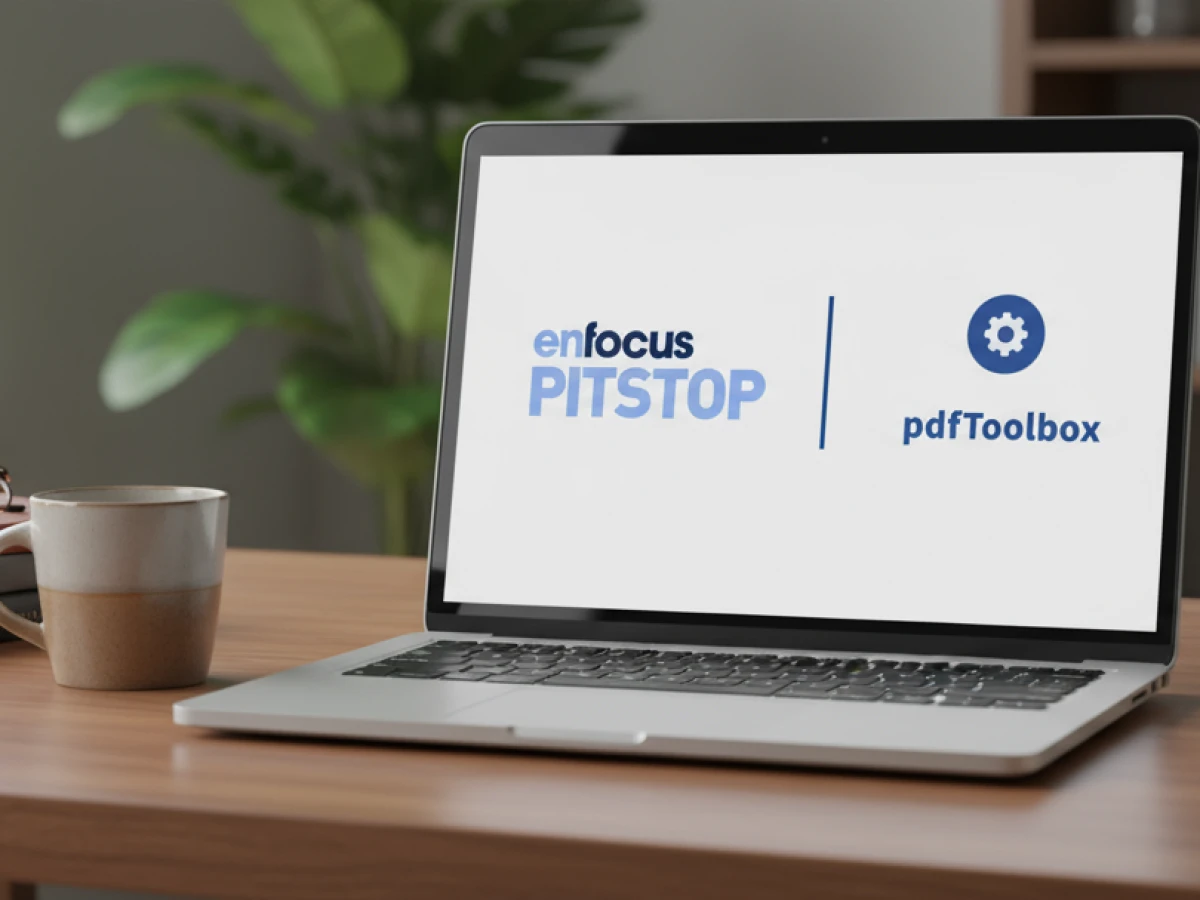ECMA Standards: The Key to Efficient Folding Cartons in Web‑to‑Pack

ECMA standards define structures for folding cartons. In Web‑to‑Pack, parameterised ECMA templates enable quick configuration, guarantee production security and reduce errors. Systems like packQ integrate these codes to harmonise creativity, efficiency and automation.
Why standardisation matters in packaging
Packaging development combines creative ideas with technical requirements. Designers think in terms of colours, fonts and brand messages, while production needs to manage fold lines, gluing tabs and machine compatibility. Without a shared vocabulary, misunderstandings quickly arise – resulting in costly changes and production delays. Standards like ECMA create a common language and reduce errors.
Advantages of standardisation:
- Clear communication – A code like “ECMA A4321” describes a precise structure. Everyone knows the folding technique, tab shape and closure mechanism involved.
- Time savings – Instead of drawing new constructions for each order, companies rely on standard models that can be adapted to size.
- Reliable quality – Defined construction rules ensure cartons stack well, fold correctly and withstand loads.
- Integration – Standards can be embedded in software, enabling end‑to‑end automation from design to print.
What is ECMA?
Founded in 1960, the European Carton Makers Association (ECMA) provides unified standards for the folding carton industry. At its core is the ECMA code system, which classifies hundreds of carton types and simplifies cooperation between manufacturers, converters and brand owners.
Structure of the code system
Each code consists of a letter and a number:
- Letter – Defines the basic form and function: e.g. A for classic rectangular folding cartons, B for tubular and sleeve cartons, E for sleeves and covers, F for multi‑piece or special forms.
- Digits – Specify the detailed design within the series, such as the type of tabs, number of gluing and fold lines or additional features like windows.
Benefits of ECMA codes
- Worldwide recognition – ECMA cartons represent about 70 % of the global folding‑carton market, enabling international understanding.
- Error reduction – Clear rules lower the risk of incorrect dies or mis‑positioned tabs.
- Efficiency – Frequently used types don’t need to be re‑designed; existing tooling can be reused.
- Flexibility – Length, width and height can be adjusted without affecting the carton’s function.

ECMA in Web‑to‑Pack practice
Modern Web‑to‑Pack systems use ECMA as a core building block. packQ stores all codes as parameterised 3D models. Users select a series, input dimensions and the rest is calculated automatically.
Parametric ECMA templates
- All codes are saved as dynamic templates.
- Users pick a code (e.g. ECMA B0620) and adjust length, width and height.
- The system recalculates faces, fold lines, gluing surfaces and waste in real time according to the code rules.
- Alerts prevent invalid sizes and correct them automatically.
Step‑by‑step process in the browser
- Select template – Browse a gallery with previews, codes and examples; search by series or application.
- Define dimensions – Enter measurements in millimetres; special parameters like window size or closures can be set.
- Choose material and print – Select carton thicknesses, coatings, recycling grades or embellishments.
- Add design – Upload logos, colours, text and images; place them on panels with 3D preview.
- Preflight and pricing – Continuous checks of resolution, colour mode and bleed; at the same time the price engine updates based on material, size and quantity.
- Output – Generate all production data with one click: flat die‑line (PDF/DXF), print‑ready PDF with layers and 3D files for AR or renderings.
Integration of other modules
ECMA templates work with additional modules to create a seamless system:
- Preflight – Checks for resolution, colours and fonts run in the background.
- Dynamic price calculation – Every adjustment updates the price.
- AI Designer Suite – Vectorisation, image optimisation and background removal aid graphic preparation.
- Variable data – Personalised data like serial numbers or QR codes can be integrated.
- API integration – Order, price and print data are passed to ERP and MIS systems.
Comparison between ECMA and FEFCO
ECMA focuses on folding cartons made from boxboard, whereas FEFCO covers corrugated‑board packaging. Both systems define constructions but differ in structure and use:
- Material – ECMA: folding carton; FEFCO: corrugated board.
- Coding – ECMA uses letter + number; FEFCO uses a four‑digit number (e.g. 0201).
- Applications – ECMA: retail packaging for cosmetics, pharma, food; FEFCO: shipping and storage.
- Integration in packQ – Both libraries are parameterised; users choose the right standard for their needs.

Benefits of ECMA‑based solutions by audience
Printers and converters
- Faster order processing – Parameterised codes eliminate manual drawing; production starts sooner.
- Fewer errors – Live preflight and proven codes reduce misprints and waste.
- Automated workflows – Data flows directly to cutting and gluing machines.
- New markets – Online configurators enable self‑service models.
Brands and marketing departments
- Rapid product launches – Variants and limited editions are configured in minutes.
- Consistent brand management – Structure remains identical worldwide; CI elements are controlled centrally.
- Real prototyping – 3D previews allow immediate feedback in meetings.
- Personalisation – Variable data can be added without separate lines.
Agencies and designers
- Creative freedom – Focus on design while the system ensures technical validity.
- Time efficiency – No need to research die‑lines; templates are ready to use.
- Easy client approval – Share designs via browser with 3D view.
E‑commerce platforms and start‑ups
- Self‑service for customers – Online configuration without specialised knowledge.
- Cost control – Live pricing provides transparency.
- Upselling – Automatic suggestions for matching packaging.
- Fulfilment integration – Orders feed directly into warehouse and shipping.
Technical background: Why ECMA can be automated
Constraint‑based modelling
Web‑to‑Pack systems use rule‑based models: each ECMA carton is associated with constraints (e.g. minimum tab width) so that geometry can adapt while remaining functional.
Parametric libraries
All codes are stored in a database containing details about base area, fold and cut lines, tab types, tolerances and optional extras like windows. This database drives 3D models, preflight checks and price calculations.
CAD output and machine integration
After configuration the software outputs CAD files (DXF/PDF) with all layers (cut, score, perforation). These can be sent directly to cutting tables, die cutters or gluing machines.
Dynamic price calculation
Parametric models allow precise prediction of material usage. The system calculates sheet counts, optimises nesting and considers material thickness and scoring technique. Price changes are visible instantly.

Sustainability and ECMA
ECMA standards support sustainable packaging practices:
- Resource efficiency – Optimised layouts reduce waste.
- Reuse of tooling – Standard shapes allow dies to be reused.
- Recyclability – Many ECMA cartons are made from recyclable materials.
- Digital development – 3D prototypes minimise physical samples and save material.
Practical example: A Web‑to‑Pack project
A cosmetics manufacturer plans a limited‑edition perfume line in three sizes. Using packQ, the team selects an ECMA A‑series code, adjusts the dimensions and uploads logos. The AI suite vectorises the logo and increases resolution. Preflight warns about fonts that are too small, which are corrected. Price updates appear immediately, and after approval the platform generates all production data. The product reaches the market within days.
Challenges and solutions
- Complex special designs – Very unusual shapes may require a combination of CAD development and subsequent parameterisation.
- User overload – Guided steps and hidden expert settings simplify operation.
- Data currency – Libraries must be updated with new ECMA codes; cloud updates help here.
- Global adjustments – Regional differences in materials, regulations and cultural preferences require flexible templates and local catalogues.
Future of the ECMA standard in the digital age
ECMA continues to evolve to meet trends such as personalisation, sustainability and Industry 4.0:
- New materials – Codes may include parameters for alternative fibres and composites.
- Digital markers – Integration of QR or data matrix fields for track & trace.
- Automatic material recommendations – AI suggests sustainable materials based on code and product requirements.
- Digital twins – ECMA codes as interactive models that communicate live with systems like packQ.
Global relevance and regional differences
ECMA is globally recognised but must reflect local conditions. Adjustments cover market requirements (food safety), cultural preferences (closure mechanisms), material availability and legal frameworks. Web‑to‑Pack systems support this with regional catalogues, multilingual interfaces and different units of measure.
Tips for implementing ECMA‑based processes
- Inventory analysis – Record existing packaging types and identify ECMA compliance.
- Training – Educate design and production teams on ECMA logic.
- Pilot projects – Start with a pilot order to gather feedback.
- Plan interfaces – Involve IT and production early to integrate with ERP/MIS systems.
- Expand the catalogue – Add company‑specific templates to the standard library.
- Define KPIs – Set metrics such as lead times, preflight error counts or share of online orders.
ECMA and innovation
Standards foster innovation by providing a stable foundation. ECMA opens up space for:
- Hybrid constructions – Combining different series for new opening experiences.
- Smart packaging – Integration of QR, NFC or AR elements on defined surfaces.
- Material experiments – Testing new materials within established geometries.
- Robotics and Industry 4.0 – Standard shapes ease automated assembly.

FAQs
How does ECMA differ from FEFCO?
ECMA applies to folding cartons, FEFCO to corrugated packages. ECMA codes combine letters and numbers; FEFCO uses a four‑digit number. Both facilitate communication and reduce errors.
Can I still create custom sizes within standards?
Yes. The basic structure is fixed, but dimensions can be adjusted. Parametric templates ensure proportions and tab dimensions remain within permissible ranges.
How does my printing company benefit from ECMA‑based workflows?
Standardised cartons can be produced faster, prepress effort is reduced and Web‑to‑Pack enables self‑service ordering, increasing job volumes and lowering costs.
Are ECMA cartons suitable for sustainable packaging?
Yes. The codes are material‑agnostic and can be realised with recyclable carton. Optimised layouts and reuse of tooling conserve resources.
How do I keep my ECMA library up to date?
Cloud‑based Web‑to‑Pack systems update codes automatically. Alternatively, software providers supply updates that can be imported.
Introducing our product features:
https://www.packagingdesignsoftware.com/feature/ecma-fefco-packq-box-library
https://www.packagingdesignsoftware.com/feature/product-configuration-and-calculation
https://www.packagingdesignsoftware.com/feature/variable-data-printing
https://www.packagingdesignsoftware.com/feature/dynamic-preflight-check



.webp)

